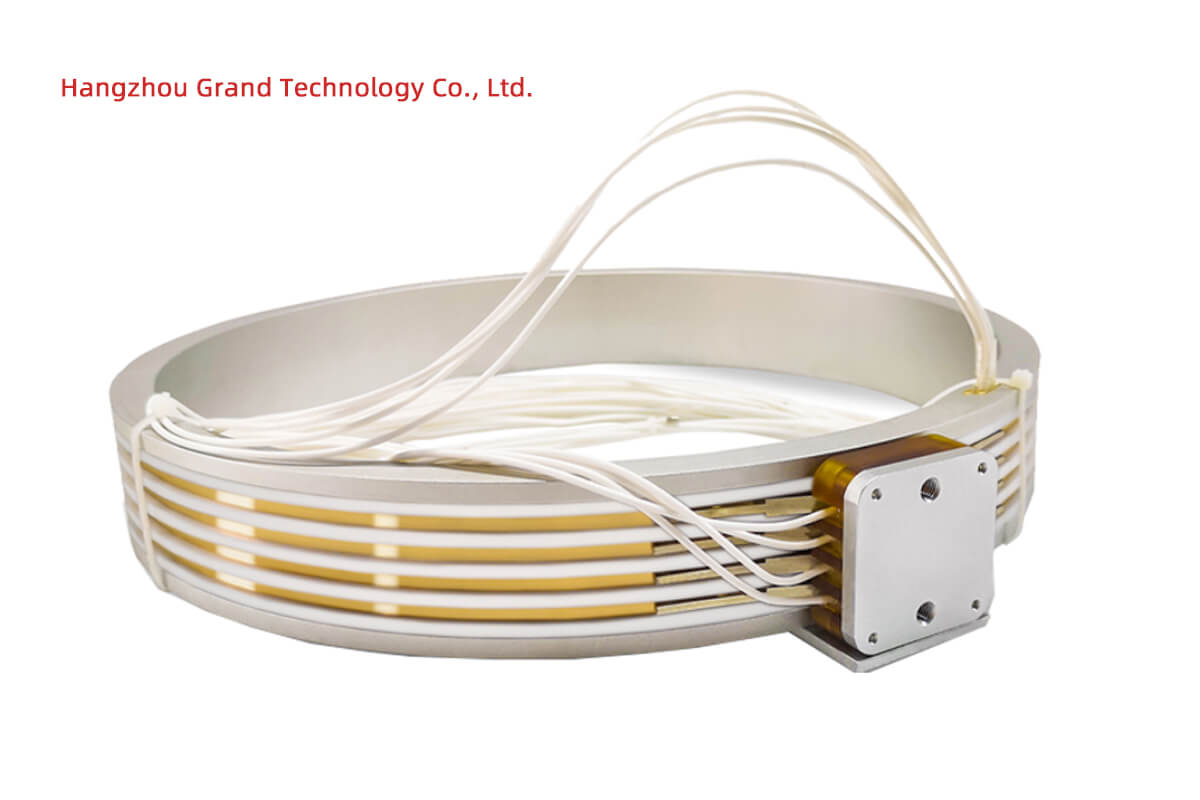Emerging at the frontier of technology, inductive slip rings depict the perfect blend of ingenious engineering and advanced science. These innovative components, also commonly known as “wireless” slip rings or “contactless” slip rings, are designed to break the barriers set by their conventional counterparts. Utilizing principles of electromagnetic induction, they provide an effective method of transferring electrical power or signals from a stationary structure to a rotating one—completely bypassing the need for direct physical contact.
In essence, an inductive slip ring comprises two main components—a primary coil and a secondary coil. The primary coil, connected to a power source, generates an electromagnetic field when electrical current passes through it. As this coil rotates, the secondary coil, tuned into the same electromagnetic frequency, picks up the electromagnetic field and converts it back into electric current. This non-contact transmission of power or signals mitigates mechanical wear and friction, offers impressive reliability, and, importantly, significantly extends the lifespan of the slip ring.
However, the significance of inductive slip rings extends far beyond their intriguing working mechanism. These components offer a multitude of practical benefits and have, therefore, found wide applicability across diverse fields. From wind turbines, automation systems, and medical equipment, to CCTV systems, amusement parks, and heavy machinery—inductive slip rings have proven their mettle in myriad applications requiring uninterrupted, loss-less power, and signal transmission across moving parts.
This vast scope of application is a testament to the crucial role inductive slip rings have come to play in our rapidly advancing technological landscape. Be it enabling the smooth rotation of wind turbines to harness natural energy resources, or facilitating complex medical procedures by powering rotating imaging devices—inductive slip rings have undoubtedly etched an indelible mark across sectors.
Bridging the gap between rotating and stationary structures with finesse and precision, inductive slip rings have become an integral part of modern engineering designs. Looking forward, as applications demanding continuous power supply and signal transmission continue to surge, so will the reliance on these fantastic feats of engineering—the inductive slip rings.
How Inductive Slip Rings Work
Inductive slip rings have a fascinating working principle, one that borrows heavily from the elementary physics concept of electromagnetic induction. At the heart of these devices are two primary parts – a primary coil which is connected to the power source, and a secondary coil which is linked to the rotating equipment. This configuration operates based on the principle of inductive coupling, a process in which an electromagnetic field is used to transfer energy between two circuits.
Let’s delve into a detailed explanation of how this process works. When electrical current from the power source passes through the primary coil, it induces an electromagnetic field around the coil. On the other hand, the secondary coil is wound such that it shares the same magnetic axis with the primary coil. As the primary coil rotates during its operation, the secondary coil mirrors this movement due to its coupled nature. This rotational movement sustains the electromagnetic field, allowing it to traverse the air gap between the primary and secondary coils.
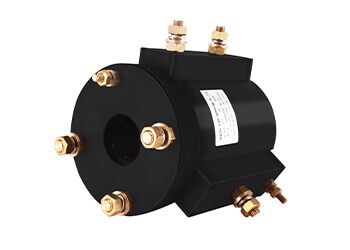
Now, here’s where the principle of electromagnetic induction comes into play. As the electromagnetic field reaches the secondary coil, it induces an electromotive force (EMF) in this coil. This EMF then generates a current within the secondary coil, mirroring the strength and frequency of the current in the primary coil. Consequently, the electric power or signals have successfully moved from a stationary structure to a rotating one without any physical contact.
This entire process of power transmission, known as inductive coupling, allows inductive slip rings to overcome issues linked to traditional slip rings. With zero physical contact during operation, mechanical wear and tear—a prominent challenge with conventional slip rings—are effectively eliminated. Additionally, it ensures a smoother power transmission without sporadic interruptions, posing immense benefits for any apparatus that depends on uninterrupted power or signal supplies.
This working principle forms the core foundation upon which inductive slip rings operate. Through diligent application of basic physics, these devices have realized a technique of power transmission that not only caters to the functional needs of various applications but also extends the longevity and reliability of such systems.
Inductive Slip Rings Design Parameter Specifications
Inductive slip rings, also known as wireless slip rings or contactless slip rings, are used to transfer electrical power and signals across a rotating interface without the need for physical contact. Designing inductive slip rings involves several key parameters and specifications. Here are the main aspects to consider:
1. Power Transfer Requirements
- Voltage: The voltage level that needs to be transferred across the slip ring.
- Current: The current carrying capacity required for the application.
- Power Rating: Total power that needs to be transferred.
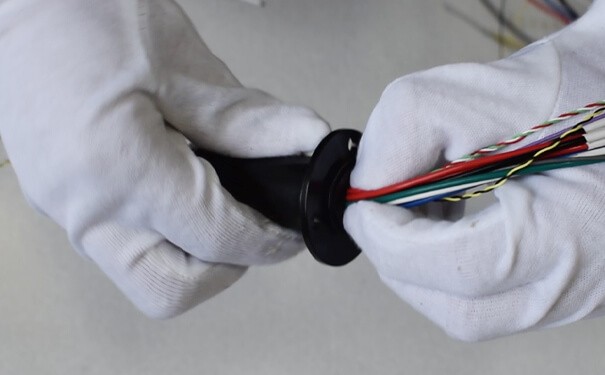
2. Frequency and Signal Specifications
- Frequency Range: The range of frequencies that the slip ring needs to handle, especially for signal transmission.
- Bandwidth: The bandwidth required for signal transmission.
- Signal Types: Types of signals to be transferred, such as analog, digital, RF, etc.
3. Mechanical Specifications
- Rotational Speed: Maximum operational speed (RPM) of the slip ring.
- Outer and Inner Diameter: Physical dimensions of the slip ring.
- Height: Height or axial length of the slip ring.
- Weight: The weight of the slip ring, which can affect mechanical design and balance.
4. Environmental Specifications
- Temperature Range: Operating temperature range.
- Humidity: Humidity levels the slip ring must withstand.
- Ingress Protection (IP) Rating: Protection against dust and water.
5. Material Specifications
- Core Material: Materials used for the core components, such as ferrite cores for inductive coupling.
- Housing Material: Materials used for the housing, which can affect durability and environmental resistance.
6. Performance Specifications
- Insertion Loss: The loss of signal power resulting from the insertion of the slip ring into the circuit.
- Return Loss: The measure of the signal reflection caused by the insertion of the slip ring.
- Coupling Efficiency: Efficiency of the inductive coupling in transferring power and signals.
- Isolation: Electrical isolation between different channels or circuits.
7. Electrical Specifications
- Capacitance: Parasitic capacitance that could affect high-frequency signal transmission.
- Inductance: Inductance of the slip ring and its impact on signal integrity.
8. Safety and Compliance
- Standards and Certifications: Compliance with relevant industry standards and certifications.
- Safety Features: Built-in safety features to prevent overheating, over-voltage, or over-current conditions.
9. Customization Options
- Number of Channels: The number of separate channels or circuits that need to be transferred.
- Customization for Specific Applications: Tailoring the slip ring design to meet specific application needs, such as special connectors, mounting options, etc.
Design Process
- Requirement Analysis: Gather and analyze all electrical, mechanical, and environmental requirements.
- Concept Design: Create initial design concepts and perform simulations.
- Material Selection: Choose appropriate materials for core and housing.
- Prototype Development: Develop prototypes for testing.
- Testing and Validation: Conduct extensive testing to validate performance under various conditions.
- Optimization: Optimize the design based on test results.
- Production: Finalize the design for mass production.
Inductive Slip Rings Assemblies
Inductive slip rings, also known as inductive rotary joints or contactless slip rings, are advanced electrical devices designed to transfer power and data between stationary and rotating parts without physical contact. This contactless technology overcomes many limitations of traditional slip rings, such as wear, friction, and electrical noise, providing a more reliable and maintenance-free solution.
Components and Operation
- Primary Coil (Stator):
- The primary coil is stationary and usually mounted on the stationary part of the assembly.
- It generates an electromagnetic field when an AC current is passed through it.
- Secondary Coil (Rotor):
- The secondary coil is attached to the rotating part of the assembly.
- It receives the electromagnetic field generated by the primary coil, inducing a current through electromagnetic induction.
- Core Material:
- Often made of ferrite or other magnetic materials, the core helps in efficiently transferring the magnetic field from the primary to the secondary coil.
- Housing:
- The housing provides structural support and protection for the internal components.
- It is designed to be robust and withstand the environmental conditions in which the slip ring operates.
Inductive slip rings represent a significant advancement over traditional slip ring technology, offering a robust, maintenance-free solution for a wide range of applications. Their ability to transfer power and data without physical contact makes them ideal for environments where reliability, performance, and longevity are critical.
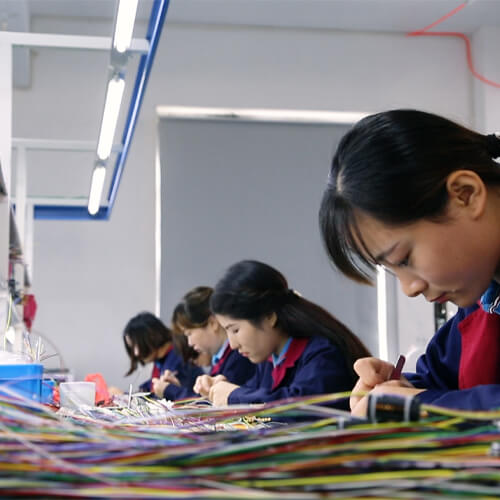
Types of Inductive Slip Rings
Inductive slip rings come in various forms, each with distinct designs, attributes, and applications. While they all share the core principle of electromagnetic induction, their unique characteristics cater to different requirements and industries. In this section, we review the different types of inductive slip rings available, along with the respective advantages they offer.
Capsule Inductive Slip Rings
Capsule inductive slip rings are compact and lightweight – a perfect solution for systems that require signal and power transmission in constrained space. They offer excellent reliability and often have low electrical noise levels. These slip rings are commonly used in robotics, medical equipment, CCTV systems, and various applications where size and weight matter significantly.
Advantages:
- Minimal form factor
- Lightweight
- Low electrical noise levels
- Ideal for applications with limited space
Pancake Inductive Slip Rings
Pancake inductive slip rings, aptly named due to their flat disc-like design, provide the advantage of increased power and signal transmission capabilities. The disc shape enables a larger surface area for mounting circuits, allowing the transmission of multiple signals and power channels more efficiently. These are particularly suitable for heavy machinery and applications in industrial settings.
Advantages:
- Efficient transmission of multiple signals
- Increased power handling capability
- Suitable for heavy machinery and industrial applications
Barrel Inductive Slip Rings
Barrel inductive slip rings are cylindrical in shape, providing a balance between compactness and power handling capability. They possess excellent heat dissipation properties, ensuring stable performance and extended lifespan under high current loads. Barrel inductive slip rings find applications in various industrial equipment, electrical machinery, and even offshore operations.
Advantages:
- Compact cylindrical design
- Excellent heat dissipation properties
- Stable performance at high current loads
- Versatility to meet various application requirements
As illustrated above, different types of inductive slip rings cater to distinct needs and application requirements. Understanding their unique characteristics and advantages will help identify the most suitable slip ring for each task in an array of industries. Whether it is meeting the demands of a small-scale robotic task or supporting a massive industrial operation, a suitable inductive slip ring is available to meet performance expectations and optimize functionality.
Key Advantages of Inductive Slip Rings
Inductive slip rings, with their novel design and working mechanism, offer a plethora of advantages, challenging the traditional norms in power and signal transmission. Through unprecedented benefits like non-contact transmission, extended lifespan, reduced maintenance, and an admirable tolerance for harsh environmental conditions, these components have carved a niche for themselves in various fields of application.
Non-Contact Nature
At the heart of inductive slip rings lie the benefits powered by their non-contact nature. Unlike contact-based slip rings, which rely on physical connections and moving parts, inductive slip rings use electromagnetic induction for power and signal transmission. This approach effectively eliminates the wear and tear associated with mechanical contacts, thereby significantly reducing interruptions, downtime, and service needs. The consistent, smooth performance of inductive slip rings is a strong selling point and a substantial upgrade over traditional units.
Extended Lifespan and Reduced Maintenance
Flowing from its non-contact nature, inductive slip rings boast an extended lifespan and minimal maintenance. Without the wear and tear induced by friction, these slip rings last longer. Moreover, the absence of contact eliminates debris production, frequent lubrication needs, or part replacement, thus resulting in low maintenance demands. This longevity and low upkeep translate to savings over time—both in terms of money and labor.
Resistance to Harsh Environmental Conditions
Another standout advantage of inductive slip rings is their resilient performance under unforgiving conditions. Their design inherently makes them impervious to dust, vibration, and moisture, ensuring their performance consistency in demanding environments—from burly industrial sites to wind turbines in the open, through to marine applications. Moreover, their high-temperature tolerance facilitates performance in high-heat applications like motor operations and industrial machinery. This advantage opens up a broader spectrum of applications for such slip rings while promising reliability in varying environments.
High Reliability and Performance
- Provides consistent performance without degradation over time.
- Ideal for applications where downtime is costly or unacceptable.
No Electrical Noise
- Since there are no sliding contacts, inductive slip rings generate no electrical noise.
- This feature is crucial for transmitting sensitive data or signals without interference.
High-Speed Operation
- Capable of operating at high rotational speeds without performance loss, making them suitable for high-speed machinery and robotics.
In essence, the inherent advantages of inductive slip rings make them indispensable across several industries, offering a combination of smooth operation, reduced maintenance needs, and unparalleled resistance to harsh conditions. Through their impressive performance, they not only serve their functional purpose but also exemplify efficiency and cost-effectiveness. It is these qualities that underline their importance and warrant their consideration in applications that demand seamless power and signal transmission.
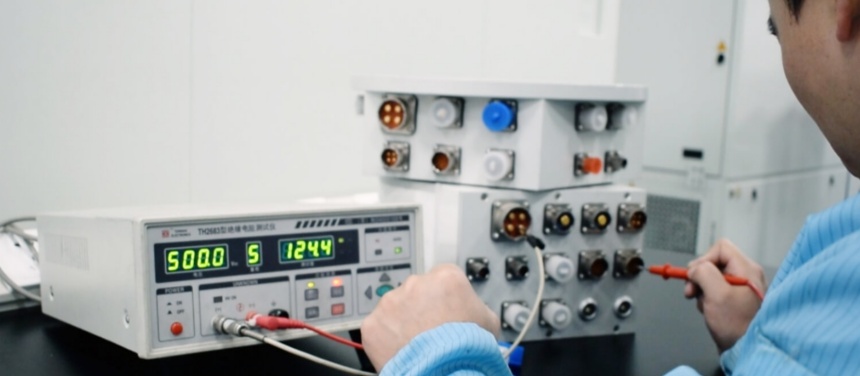
Applications of Inductive Slip Rings
Inductive slip rings, also known as wireless slip rings or contactless slip rings, have a variety of applications due to their ability to transfer power and data between rotating and stationary parts without physical contact. Here are some key applications:
- Wind Turbines: Inductive slip rings are used in wind turbines to transmit power and signals from the rotating blades to the stationary control systems, enhancing reliability and reducing maintenance needs.
- Robotics: In robotics, inductive slip rings are employed to ensure continuous power and data transfer in joints and rotating sections, allowing for more flexible and dynamic movements without the limitations of traditional wired connections.
- Medical Devices: They are used in medical imaging devices like CT and MRI scanners to transfer power and high-speed data signals between the rotating imaging components and stationary systems, improving image quality and device reliability.
- Rotary Tables: In industrial automation, rotary tables with inductive slip rings enable precise rotation and positioning of parts while maintaining power and signal transmission, increasing efficiency in manufacturing processes.
- Aerospace and Defense: Inductive slip rings are utilized in various aerospace and defense applications, including radar systems, satellite communication, and gyroscopes, where reliable and maintenance-free operation is critical.
- Packaging Machinery: In packaging machinery, these slip rings allow for continuous rotation of packaging materials and machinery components, improving the speed and efficiency of the packaging process.
- Offshore Drilling: In offshore drilling equipment, inductive slip rings are used to transfer power and data between the rotating drill string and stationary control systems, ensuring reliable operation in harsh environments.
- Automated Guided Vehicles (AGVs): Inductive slip rings are used in AGVs to provide continuous power and communication, allowing for uninterrupted operation and precise control in logistics and manufacturing facilities.
- Renewable Energy Systems: They are applied in various renewable energy systems to enhance the reliability and efficiency of power transmission from rotating components like solar trackers and hydro turbines.
- Entertainment Industry: In stage lighting and rotating displays, inductive slip rings enable seamless power and data transfer, allowing for dynamic and complex movements in performances and displays.
Potential Drawbacks and Limitations of Inductive Slip Rings
While inductive slip rings bring numerous benefits, they do come with their share of drawbacks and limitations. Two major concerns are electromagnetic interference and a potential decline in power transmission efficiency. Understanding these concerns and learning to mitigate them helps optimize inductive slip ring applications and prevent unexpected performance shortfalls.
Electromagnetic Interference
Inductive slip rings use electromagnetic induction for energy and signal transfer. However, the use of electromagnetic fields can potentially expose nearby devices to interference—especially those that rely on electromagnetic waves for operation. This issue can cause the transmission of inaccurate signals, data loss, or improper functioning of the affected devices.
To mitigate this challenge, proper shielding techniques can be employed. Shielding the slip rings reduces the chances of outgoing interference affecting other devices. Proper isolation and distancing of sensitive equipment from the inductive slip ring’s vicinity also aid in reducing the impact of interference.
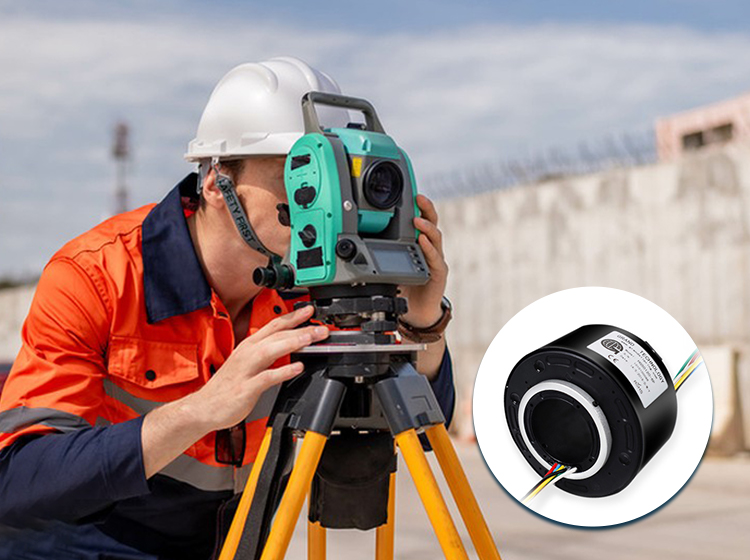
Decreased Efficiency
Another slight drawback of inductive slip rings is the potential decrease in power transmission efficiency, particularly in large-distance applications. The efficiency of inductive power transfer depends upon the distance between the primary and secondary coils. As the distance increases, the power transfer efficiency decreases due to a drop in coupling strength.
To address this, designs that minimize the air gap between the primary and secondary coils can be implemented. Reducing this gap helps maintain high power transfer efficiency. Additionally, using higher-quality materials with better magnetic properties and fine-tuning the operating frequency can drive an improvement in power transmission efficiency.
In summary, while inductive slip rings bring revolutionary benefits to power and signal transmission, it is crucial to approach their potential limitations with understanding and remedy them effectively. Implementing appropriate mitigation strategies helps to unlock the full potential of these devices while ensuring optimum performance and longevity in various applications. Understanding these drawbacks does not detract from the unique advantages of inductive slip rings, but allows users to make informed decisions and anticipate potential challenges in their specific applications.
Key Considerations When Purchasing Inductive Slip Rings
Choosing the right inductive slip ring may seem dauntless given the plethora of options present in the market. To maximize your investment, several factors ought to be taken into account – compatibility with the existing system, signal strength, resistance to interference, cost implications, and the size of the slip ring. Furthermore, it’s crucial to understand your specific application requirements to ensure a fitting choice.
Compatibility
It’s crucial to ensure that the inductive slip ring is compatible with your existing system. Not just in terms of physical fitment, but also electrical and power compatibility. The ring must support the specification of signals and power you need to transfer. A mismatch can affect system performance and may potentially damage other components.
Signal Strength
Considering signal strength is also critical – the selected slip ring should be capable of transferring signals without excessive signal loss or degradation. This factor matters considerably in applications that require the transfer of delicate signals.
Resistance to Interference
Given their working mechanism, inductive slip rings can potentially cause electromagnetic interference. Therefore, it’s crucial to consider rings designed with proper shielding or other interference mitigation features, especially when deploying them in fields that are sensitive to electromagnetic interference.
Cost
Cost is an essential factor. When considering cost, consider not just the upfront expense of the inductive slip ring but also potential costs related to installation, ongoing maintenance, and possible replacement. A holistic view of these factors will inform a more reliable and cost-efficient selection.
Size
Lastly, the physical size of the inductive slip ring is essential, especially in applications with space constraints. Ensure that the selected slip ring will physically fit into the system without causing friction or stress on other components.
Application Requirements
While addressing these factors, it’s imperative to remember that your specific application requirements dictate the ultimate choice. The type of machinery, operational environment, system load, and required signal strength vary from application to application. Tailoring your selection to these needs will result in an optimized system performance.
In conclusion, the decision to invest in an inductive slip ring shouldn’t be taken lightly. Evaluating your requirements and matching them with the right kind of slip ring can spell the difference between a smooth operating system and a deficient one. Your investment in time and research now will pay dividends in the form of stellar system performance and longevity in the long run.
Concerns of Inductive Slip Rings
For those considering inductive slip rings, it’s natural to have several questions and concerns. This section aims to address some popular doubts regarding the reliability of inductive slip rings, the type of signals they can transmit, their speed of operation, suitability in diverse environments, and heat generation related to their operation.
Reliability
One common question revolves around the reliability of inductive slip rings. Given their non-contact nature, these components generally offer a higher degree of reliability compared to their traditional counterparts. The lack of mechanical wear and tear significantly reduces instances of failure, ensuring uninterrupted service for longer periods.
Types of Signals
Another frequently asked question is about the types of signals that inductive slip rings can transmit. Inductive slip rings are capable of transmitting a variety of signals, including but not limited to, data signals, video signals, and control signals. The specific capabilities, however, depend on the design and specifications of the particular inductive slip ring model.
Speed of Operation
Questions also come up regarding the speed at which inductive slip rings can operate. The operation speed depends on the size, design, and specifications of the slip ring. Most models can support high-speed operations, making them suitable for a broad range of applications, from small devices to significant industrial equipment.
Suitability in Diverse Environments
Inductive slip rings are highly resilient, making them suitable for operation under diverse environmental conditions, including dust, vibrations, and high humidity. They are also resistant to high temperatures due to their non-contact mode of operation, making them robust and long-lasting even in harsh working conditions.
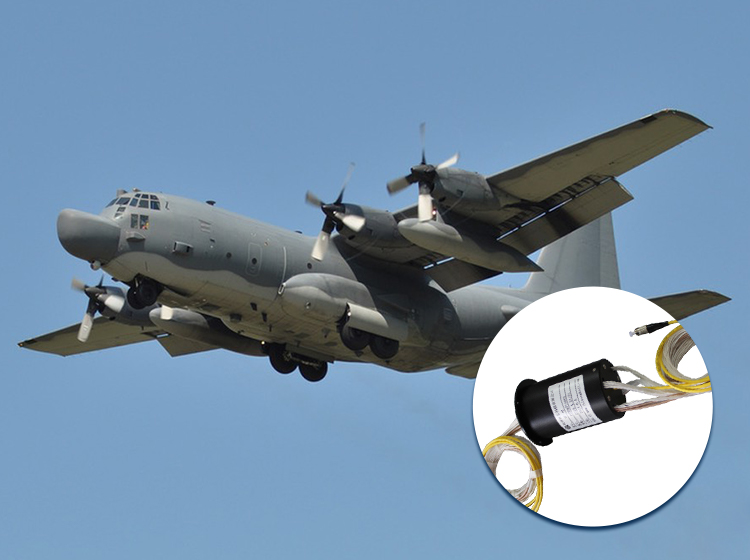
Heat Generation
Heat generation is a common concern for any electronic component. The good news is that inductive slip rings generate less heat compared to their contact-based counterparts, thanks to their non-contact nature of operation. While they do produce heat during operation, it is less likely to cause components to overheat, enhancing system efficiency and longevity.
In a nutshell, while it’s usual to have questions and concerns about inductive slip rings, understanding their operation and benefits helps dispel doubts. They not only offer superior performance but their versatility and resilience make them an excellent choice for a wide spectrum of applications. However, as with any component, it’s vital to choose an inductive slip ring that fits your specific application requirements to ensure optimal performance.
Latest Advancements in Inductive Slip Rings
As with any technology, inductive slip rings are continuously undergoing improvements and advancements, aiming at better performance, downsizing, and enhanced resistance to environmental elements. Understanding these advancements can help users find updated solutions that significantly boost their systems’ efficiency and longevity.
Performance Improvements
The most crucial advancements in inductive slip ring technology revolve around performance tuning. Modern-day slip rings now come with enhanced signal stability and reduced signal noise, ensuring uninterrupted and accurate signal transmission, and enhancing overall system performance.
Enhancements have also been made to reduce power loss during transmission. This improvement not only boosts the overall efficiency but also helps save energy, making these components more environmentally friendly.
Size Reductions
Despite their initial bulky and large design, newer inductive slip ring models have seen significant size reductions without compromising their performance. This advancement has been made possible through innovative design and the integration of compact, high-efficiency components. This downscaling extends the applications of these components to systems with tight space restrictions, such as robotics and UAVs.
Enhanced Resistance to Environmental Elements
Recent advancements in inductive slip rings have also focused on improving their resistance to harsh environmental elements. Technological enhancements have led to the development of slip rings that can effectively operate in extreme temperature ranges, high-humidity environments, and areas with dust and vibration.
Materials used in the construction of these slip rings have also been upgraded. The utilization of corrosion-resistant materials ensures the component’s longevity, especially in saline or corrosive environments.
In summary, the latest advancements in inductive slip ring technology demonstrate a steadfast commitment to overcoming the earlier limitations and enhancing their versatility for a wide array of applications. As the technology evolves, so does the capability of these components, which can only mean better performance, increased efficiency, and the possibility to cater to a more comprehensive range of applications. When looking to invest, it’s essential to stay abreast of these advancements to make an informed decision that gives you the best in performance and reliability.
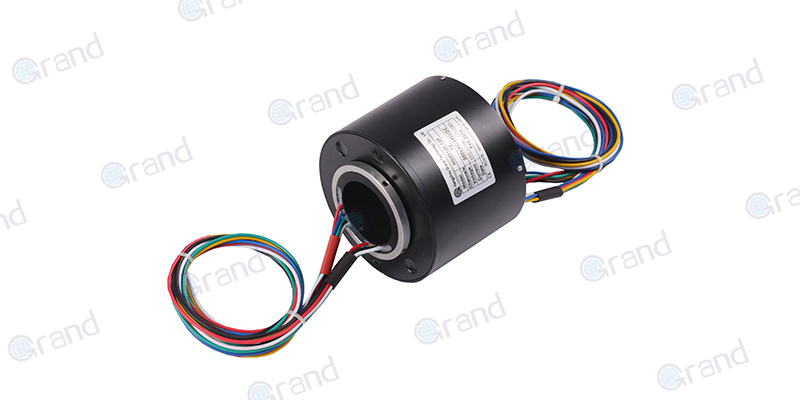
The Future of Inductive Slip Rings
As we enter an era of rapid technological advancement, the future of inductive slip rings appears bright. Future trends indicate ongoing improvements, not only in functionality but also in areas of smart system integration, such as the Internet of Things (IoT) and Artificial Intelligence (AI), as well as fostering more sustainable practices.
Request a quote for our slip rings by providing your details in the form.
Integration with IoT and AI
One of the exciting future prospects is the integration of inductive slip ring technology with IoT and AI. This combination allows inductive slip rings to take on more advanced roles, such as real-time system monitoring, predictive maintenance, and self-regulation.
For instance, by interfacing with IoT networks, inductive slip rings can relay data about their operating status in real-time. This data allows operators to monitor the performance of the slip ring and the broader system continually. When integrated with AI, this information can be used to predict potential abnormalities, enabling a move from reactionary to preventative maintenance—ultimately enhancing overall system lifespan and performance.
Sustainability
In the future, the development of inductive slip rings is also likely to focus on embracing sustainable practices. For example, manufacturers will progressively seek materials and production methods that contribute less to environmental pollution while maintaining or improving product performance.
Moreover, higher energy efficiency and reduction in power loss during operation will remain focal points in ongoing research and advancement. The end goal is to have inductive slip rings that consume minimal power for maximum output, further reducing the carbon footprint of systems that employ these components.
Broader Application Scope
As technology progresses, inductive slip rings are also expected to find applications in emerging and novel fields. From autonomous vehicles to IoT-enabled smart homes and industries, their usage is envisaged to grow, contributing to the seamless integration of electrification and data transfer needs.
In short, inductive slip rings’ future promises a fusion of advanced technologies and sustainable practices. While they are poised to become even more reliable and efficient, their integration with IoT, AI, and sustainable operations hints at profound implications for a broad range of industries. For those keen on keeping up with trends, the future of inductive slip rings continues to offer exciting potential for innovation and growth.
Conclusion
Inductive slip rings, with their array of advantages and continuous improvements, are undeniably transforming the face of several industries. As we eagerly anticipate future developments, these pioneering components are poised to become even more integral in various applications, reinforcing their place as revolutionary game-changers.
Need expert advice on slip rings? Fill out the form and our specialists will assist you.


